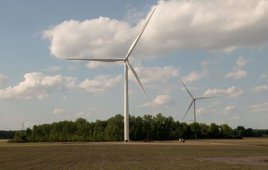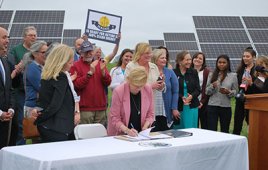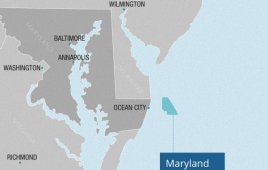A report launched in New York by wind consultancy K2 Management and JLT Specialty USA, a U.S. subsidiary of Jardine Lloyd Thompson Group (JLT), reveals that the wind industry should consider lifetime extension at a much earlier stage to ensure best project returns.

K2 Management and JLT Specialty USA’s report includes data from 60 onshore and offshore projects throughout Europe and Latin America. The findings reveal that the wind industry should consider a lifetime extension at a much earlier stage to ensure best project returns.
Launched during this week’s AWEA Offshore and Finance events in New York, ‘Reducing The Levelized Cost of Energy: Challenges, trends and opportunities in today’s wind projects for tomorrow’s business cases’ has identified the key challenges and trends that will shape the future of onshore and offshore wind projects over the next 12 months.
“This report gives a great insight into real wind projects, detailing the trends that are being seen across the industry and expert analysis on how these will reflect on future projects,” said Carsten Ploug Jensen, MD, USA, and Canada at K2 Management.
The report reviewed data from 60 onshore and offshore projects throughout Europe and Latin America with clients including independent developers, state-owned utilities, and private investors, giving a broad view of the challenges and opportunities facing the sector from a variety of different perspectives.
The key findings from the report include:
- A quarter of wind projects are looking to extend the life of their project – potentially by a further five years. Currently, 25 years is considered to be an achievable lifespan for an offshore project, but 30 years may be an achievable target. This news will be welcomed by developers and investors who, given the high cost of developing wind projects, are increasingly keen to optimize their return on investment but it is clear that steps must be taken to consider and plan for life extension much earlier – around year 10 – to ensure the best project returns.
- Developers are taking action to reduce their risk exposure on projects, with 60% of pre-construction offshore projects adopting five or less Engineering, Procurement, Construction and Installation (EPCI) contracts. Limiting these contracts could potentially reduce the costs of projects overrunning and the likelihood of a knock-on effect on other contractors as a result.
- A quarter of projects had underestimated the costs of operational expenditure, leading to concerns that this could have huge implications on performance and valuation of the project further down the line. Many of the projects that were surveyed had not yet reached the twenty-year lifetime, and so much of the project budgeting was based on educated assumptions, but there was real concern that these underestimations could up the costs of projects by millions.
“As a technical consultancy, we are on the forefront of energy projects at all stages of the lifecycle, supporting clients in making their projects a success,” explained Jensen. “By teasing out these important trends from our assignments, we can help the industry to take an objective look at the market, giving insight into improvements and future challenges based on real project experience and expertise.”
“Pairing with K2 to collaboratively identify common trends in the wind sector, has allowed JLT and K2 to leverage each other’s insights and produce a document that should be interesting to the entire industry,” said Rob Battenfield, Senior Vice President at JLT Specialty USA.
“The collaboration exemplifies JLT Specialty USA’s focus and commitment to our clients in the wind energy space,” added Battenfield. “We seek to understand our clients’ current insurance and risk issues, but also to forecast and identify emerging issues that may present new issues for our clients.
The full report featuring legal commentary from Eversheds Sutherland and can be found here.
Filed Under: News, O&M, Uncategorized




